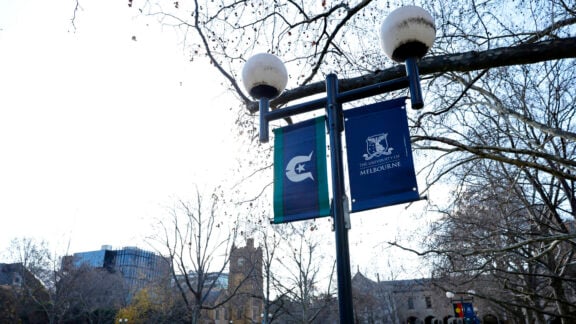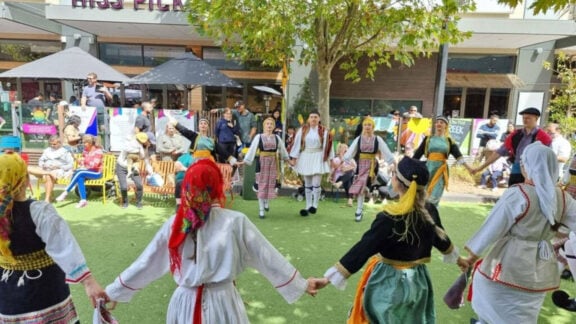Halkidiki is off the tourist track, as far as most Australians are concerned. If you’re not from there, you’ve probably never been. It’s not glitzy, it’s not glamorous.
There are no Mykonian windmills and there are few, if any multimillion-dollar celebrity super-yachts. There are, however, five good reasons to go. Halkidiki is real. It’s where Greeks and other Europeans go on holidays, and despite the recent development of several horrible resorts, there are parts that are truly unspoiled by the scourges of tourism and pollution that infiltrate many other parts of Greece.
However, because it’s unspoiled and underappreciated, it’s also underdeveloped. There are no touristy shuttle buses to get you around and while the public buses are surprisingly regular and efficient, they can’t get you to the places you want to visit. So if you have a car or motorbike, jump on board. If not, hire one. Start your drive in Poligiros, the capital of Halkidiki.
Here in the breezy hills you’ll find an active little city, springing out of a well-preserved and still inhabited old town. Strangely, while the rest of Greece has struggled with an economic crisis, Poligiros has continued to develop and grow, with several significant infrastructure and construction projects completed in the last few years. A morning stroll down the new pedestrian mall will take you past the town hall, the newly erected statue of Aristotle (a Halkidiki native), and a series of shops and restaurants nestled under the shade of a towering old chestnut tree. If you’re there early enough (or late enough at night) your nose will undoubtedly lead you to the traditional wood-fired bakery that bags up bread, tiropita and sweet pastries. Tell Naki I sent you.
Further down the path, you’ll come across the blue-domed church of Agios Nikolaos and at the end of the walk the Eksi Vryses (Six Springs), where you can drink the icy water that pours straight out of the nearby mountains. If you prefer a frappe, the ‘touristiko’ tavern is nestled in the shady 28th October park behind the springs. Jump back in the car and head south towards Gerakini, a town that my yiayia tells me was one of the first tourist beaches in Greece when going to the beach in the summer first became popular. Keep driving. If you want a taste of the real Halkidiki, give the Kassandra arm a miss. This area caters to package tourists from northern Europe and cashed-up Greeks, and could easily be confused with Faliraki on Rhodes. Head instead to Sithonia, the middle arm of the Halkidiki Peninsula, for peace, serenity and unrivalled beauty. After passing through Nikiti, follow the signs towards Sarti and take the dirt road turn-off just before you hit Sykia. This will take you down to a tiny, rocky bay called Pygadaki, or ‘the little well’.
There are no signs, so you just have to drive until you find it, but you’ll know when you do. The small sandy stretch of beach is hemmed in on both sides by rocky outcrops that plunge into deep pools.
It’s a rock-hopper’s dream, as the further you climb away from the sand, the more you feel like you’re finding a place that has never been found before. It’s the perfect place to bask on the rocks and explore the crystal-blue water. Once you’re done basking, grab a bite at the taverna that serves up fresh seafood and other treats. Don’t bother reading the menu, just ask what’s available.
After lunch, jump back in the car and continue south on the main road. Some time after Kalamitsi and before Koufos you’ll start spotting dirt tracks to the left. Take one. I can’t guarantee that you’ll end up where I did, but it’ll probably be good anyway.
I discovered a secluded, private sandy beach that apparently only Greeks knew about. Many of them looked like they’d been there for years, their campsites were so well set-up, complete with timber decks protruding from caravans, solar power and improvised gas supplies. There was not a solid building in sight.
The beach on this southern tip of Sithonia is so still that these summertime locals place tables and chairs in the water and play backgammon and sip frappe while keeping their feet cool. Pure bliss. As the shadows start to grow long, hop back in the car and make for Mango Bar at Akti Kalogrias, just outside Nikiti. Here you can float in the sea while sipping on a cocktail and soaking up the last of the day’s sun. It doesn’t get much better than that. However, if you have more than one day, or aren’t there in the summer, there are still plenty of things to do in Halkidiki.
Take a drive north of Poligiros towards the village of Taxiarhis in the Holomontas mountains. On the way up, an old man will undoubtedly try to wave you down and drag you into his taverna. If you’re hungry, stop, but don’t go to his taverna, go to the one next-door, where at the right time of year you’ll find some of the best freshly roasted lamb ribs and baby goat. Turning left up the dirt road just after the taverns will lead you to an amazing sunset-watching spot. Be aware of the military dogs that may be patrolling the area, but the view is worth it. Continuing back on the main road, just outside Stageira, you’ll come across a giant statue of Aristotle, renowned philosopher and local.
There’s a park nearby that features interactive re-builds of some of his most famous experiments and discoveries that can be accessed for a small donation. Next stop is Ouranoupolis, the last town before the border with the autonomous monastic state of Agion Oros (the Holy Mountain). The town has some interesting sites, including a recently discovered ancient monastery, and a Byzantine tower originally built as a watch-house. More recently, the tower was inhabited by Australian woman Joice Loch, who was a Quaker sent to help refugees from Asia Minor and Eastern Europe.
Joice and her husband Sydney lived out their days in the tower.
From Ouranoupolis, you can take a tourist ferry that will show you some of the oldest and grandest of the monasteries from a distance of no less than 250 metres offshore. For a closer look, men can apply to the Pilgrims’ Bureau in Thessaloniki for permission to enter the Agion Oros for a period of three days. As visitor numbers are limited, preference is given to Orthodox males. Sorry ladies, despite several pushes from the European Union, the Agion Oros is still a men-only zone. Halkidiki is also celebrated for its many religious festivals.
In summer, the festival of August 15 is celebrated at the church of Panagia, just outside Poligiros, where festivities last for 12 days. Poligiros is also famous for its annual Apokries carnival, including a colourful parade and endless parties in the lead-up to lent. In early autumn, locals will tell you that if you can think of it, you can find it at the festivals of Agios Mamas and Agios Prodromos. So next time you find yourself in Greece, give Halkidiki a go. It’s well worth the detour.







